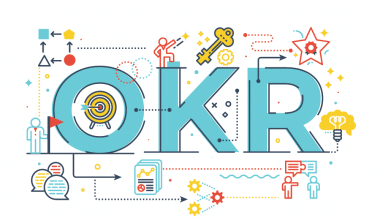Are you ready to elevate your customer contacts and provide them with an outstanding experience? Look no further than customer experience management (CEM).
CEM actively changes the customer journey and surpasses customer expectations to build loyalty and satisfaction. It’s not just about tools and software; it’s a comprehensive strategy to understanding your consumers and applying that knowledge to optimize every customer encounter.
Imagine creating extensive customer profiles and using that data to allow your team to provide customized, real-time customer service at every touchpoint. Join us as we walk you through the fascinating world of CEM and demonstrate how to use customer experience management software and tools to elevate your customer experience to new heights.
What is Customer Experience Management?
Customer experience management is the phrase used to describe a set of methods that assist brands nurture their connections with their customers.
Whilst customer relationship management (CRM) focuses on quantitative data to turn consumers into customers, customer experience management (CEM) is more comprehensive, encompassing qualitative data at every conceivable touchpoint.
The purpose of customer experience management is to improve the customer experience at every point of the customer journey, whether that is during the purchasing process, during customer care calls, or through social media interactions. Making every interaction, whether passive or active, productive is the key. Do that, and you’ll increase brand loyalty.
What is Customer Experience Management Software?
Customer experience management software is a technology that assists you in managing your organization’s relationships with customers, both present and potential. The system functions as a record of interactions across all your customer-facing touchpoints, organizing, automating, and synchronizing them so you can service all of your existing clients and respond fast to complaints and new business.
It should also allow you to take direct action in response to what your experience data is telling you about customer journeys. This could be accomplished through a ticketing and notifications system that alerts the appropriate people about problems or queries, or by closing the loop with customers by contacting them directly, wherever they have provided feedback.
Why Does Customer Experience Management Matter?
Good customer experience management involves more than just appearances or public relations. By putting the customer first and making technology feel more human, you may create win-win situations for both you and your customers.
In the competitive, hyperconnected global marketplace, customer experience has become a vital differentiator for all types of enterprises. While the final result for a business may be lead generation, conversions, or long-term brand loyalty, the customer also benefits from rich, individualized experiences, greater satisfaction, and a satisfying relationship with the brand.
The following are some of the benefits of customer experience management:
#1. Get a better grasp of your customer base.
- Provides a more complete picture of customer preferences and behaviors across all touchpoints.
- Enables more comprehensive segments to give the highly relevant tailored experiences that clients desire, resulting in higher conversion rates.
#2. Promote loyalty and retention
- Delivers individualized experiences and creates seamless customer journeys with powerful marketing automation software.
- Cultivates stronger, enduring relationships with customers through intelligent service, product recommendations, and loyalty incentives.
#3. Retain a competitive advantage
- Increases operational performance to boost customer satisfaction and reduce customer turnover.
- Improves the win rate of offers and decreases service expenses.
#4. Measure the success of initiatives.
- Gathers and evaluates far bigger volumes of data, giving you a more accurate picture of the success of your engagement activities.
- Aids in making better educated, customer-centric business decisions.
Six Stages Customer Experience Management Strategy
Step #1: Know Your Consumers
With sophisticated market research methodologies such as Customer Choice Analysis, you can learn the secrets to understanding your customers and prospects. This will provide you with useful information that goes beyond demographics and observable behavioral data, allowing you to categorize your audience and map common experiences in customer journey maps.
Step #2: Specify Relevant Goals
Establish explicit objectives with measurable KPIs and target levels. Be sure that your objectives are both economic and behavioral in nature, as this will give a foundation for thorough corporate control.
Step #3. Designing Unique Customer Experiences
You can build differentiated customer experiences by involving internal personnel, external partners, and customers in the design process. Employ co-creation strategies to ensure that target experiences are personalized to each intended customer category.
Step #4: Increase Internal Capabilities
To guarantee that your company is prepared to deliver the desired customer experience, create a roadmap that includes procedures, structures, individuals, knowledge, skills, technology, tools, information, and culture.
Step #5: Establish Connections with Customers
Organize customer connections by designing a playbook that includes how the relationship with your customers will evolve, which customer-facing processes you will need to adjust, what information and sales channels can be used, and how customer communication will be managed.
Step #6: Evaluate and Adjust
Assess the accomplishment of your objectives and take corrective action as needed to guarantee that the customer experience is continually improving.
Top 6 Customer Experience Management Tools for 2023
- Statusbrew
- Adobe Experience Manager
- Clarabridge
- Khoros
- Sprinklr
- Zendesk
#1. Statusbrew
Statusbrew is a comprehensive social media management platform that assists businesses in managing their social media presence, increasing customer engagement, and gaining important insights into customer behavior. Following are some major customer experience management aspects of Statusbrew:
- Unified inbox management: Creates an organized inbox where businesses can manage their direct messages, social comments, and reviews all in one spot.
- Scheduling and automation: Enables you to schedule social media postings in advance and automate operations like publishing material.
- Social media management: Companies can manage many social media accounts from a single dashboard, including publishing, scheduling, responding to comments, and analyzing performance data.
- Analytics: Offers in-depth insights on social media engagement, reach, and audience demographics with 180+ indicators.
- Customer service: Statusbrew includes a strong customer service function that enables organizations to track and manage customer contacts as well as assign team members to address specific customer interactions.
- Social media listening: It enables organizations to monitor mentions of their brand, competitors, and industry keywords across many social media sites.
- Notifications: Statusbrew allows you to be notified of practically every customer interaction via your preferred channel, letting you respond quickly.
- Collaboration tools: Includes built-in collaboration tools to enhance communication between team members and approve work before it is published.
#2. Adobe Experience Manager
Adobe Experience Manager (AEM) is a comprehensive platform that manages the whole customer journey, from a website and app usage to digital asset management and content delivery across numerous channels. For a completely customized experience, you may modify your brand, product, or service for each customer based on their device.
AEM makes it simple to distribute your content across several platforms, making it simple to engage with your customer in a meaningful way. With this customer experience platform, you will have the insights you need to take your customer experience to the next level and leave a lasting impression.
#3. Clarabridge
Do you want to know your customers better than ever before and provide a really remarkable customer experience? Clarabridge, the best customer experience management software, is the answer. With Clarabridge, you can analyze every customer interaction, from voice to text, and identify customer sentiment.
This customer experience software provides a 360-degree view of customer input and enables you to act in real-time using text analytics and natural language processing. With Clarabridge’s simple dashboards, reports, and alerts, you can turn customer input into useful insights. Clarabridge enables large-scale contact centers to swiftly identify and address poor customer experience issues.
#4. Khoros
Khoros is a comprehensive solution for gaining an actionable perspective of your consumers and providing an exceptional customer experience. The CX Insights consolidates and categorizes all of your customer conversations and comments for thorough CX analysis.
The following are Khoros’ top features:
- Customer Engagement Platform: An omnichannel platform for organizations to address customer issues and inquiries.
- Contact Center: Facilitates customer support efficiency, automation, and operational insights.
- Social Media Management: Provides content management, publication, and governance.
- To comprehend social trends, use social listening.
#5. Sprinklr
Sprinklr is a sophisticated customer experience platform used by many large firms to market, advertise, and conduct research. The following are some of Sprinklr’s key features:
- Modern Engagement: A social media management tool that enables organizations to manage their social media operations across 35 channels.
- Modern Marketing: A content solution that enables firms to send the correct material to their viewers at the right time.
- Modern Research: A research tool that allows firms to measure brand equity measures.
- Modern Care: A customer service solution that enables organizations to scale their customer care.
#6. Zendesk
Zendesk enables organizations to create a simple customer experience. They offer comprehensive customization of your customer support solution with advanced workflow capabilities, ensuring that customer support tickets are routed to the proper agents with the knowledge needed to handle the customer’s problem.
The top characteristics of Zendesk are:
- Routing of tickets
- Native Integrations
- Live chat software
- API
- Knowledge base
- Self-service portal
- Tracking and reporting
- Automation
- Forums for the community
Questions To Ask Assessing Customer Experience Management Software
Whether you’re just getting started with customer experience management software or looking for the best customer data platform (CDP) for your business, here are six critical questions to ask about any CXM software, technology, or procedure.
#1. Does it add real-time data to customer profiles?
CXM technology should combine all data—behavioral, transactional, financial, and operational—into a single real-time customer profile. A strong CXM system gathers and combines data access from various sites and allows you to capture all of those data points in real-time. The more unified, real-time, and integrated your customer profiles are, the deeper and more actionable insights you’ll gain.
#2. Does it interact with your current ecosystem?
Any customer experience management system provider should provide an open and expandable technology platform. The technology platform should support customer experience apps, a single data model, and an open ecosystem, allowing you to provide fresh, innovative experiences to your customers while distinguishing you from the competition.
#3. Does it adapt and expand personalization?
A good CXM system enables continuous testing and real-time personalized optimization. It enables you to create memorable experiences more quickly and employs the next generation of intelligent software to provide personalized content at scale.
#4. Does it enable you to orchestrate cross-channel customer journeys?
CXM software streamlines the customer journey and enables you to design, connect, deliver, and manage customer experiences across many channels—from call centers and physical stores to email, social media, online and mobile apps, and all the other ways people interact with your business.
#5. Does it have the intelligence to assist you in growing?
Real-time, predictive intelligence, and machine learning skills are the foundation of every CXM approach, whether it’s making sense of enormous volumes of customer data, automating repetitive operations, personalizing buyer experiences, or orchestrating customer journeys. Contemporary artificial intelligence solutions, such as CDPs, are critical to supporting your current demands and achieving your future customer relationship goals.
#6. Does it contribute to the development of trust and the protection of customer privacy?
You must build customer trust and safeguard sensitive information in order to practice good customer experience management. Examine any CXM technology offering for powerful data privacy and security features, as well as any assistance you may require with industry-specific compliance standards.
What Distinguishes CRM from CXM?
Due to their shared basic capabilities, CXM and customer relationship management, or CRM, are frequently misunderstood. While there is a considerable resemblance, CXM is not simply a rebranding of traditional CRM. CXM advances the management of customer connections. Whilst CRM focuses on optimizing a company’s internal processes, CXM takes a customer-centric approach in a variety of ways, including new technology, procedures, strategies, and customer-centric design.
CXM varies from typical CRM in that it provides additional benefits and capabilities for creating customer relationships. While CRMs collect data through the manual or batch entry, a true CXM will allow for real-time data flow to provide deeper insights into customer preferences and behavior.
The CXM approach goes beyond typical CRM in terms of strategy and methods. A corporation that wants to become more customer-centric uses CXM to implement procedures to measure, oversee, and choreograph exchanges and engagements with customers.
Because CXM is both a set of technology and a set of processes, and data is not siloed, it enables you to offer a real cross-channel customer experience.
Conclusion
In today’s fast-paced startup climate, adjusting and responding to change is critical for any firm to prosper and survive. Customer experience management provides a framework for doing just that by putting the customer at the center of all decisions and consistently working to improve the total customer experience.
Understanding CXM not only helps you become more customer-centric but also makes you more agile and responsive to the ever-changing business landscape. Once CXM gets established in your company’s cultural DNA, the sky’s the limit for success and customer pleasure.
Are you ready to elevate your customer experience and stay ahead of the curve? Follow our approach to customer experience management and watch your business rise!
- Best Customer Experience Management Software in 2023
- Retail Customer Experience: Definition & All You Need To Know
- CUSTOMER RELATIONSHIP MANAGEMENT SYSTEMS: Definition, Examples & Best Strategies
- CUSTOMER SERVICE EXPERIENCE: Definition and How To Describe Them
- CRM Tools For Small Businesses: Free Tools And Application






